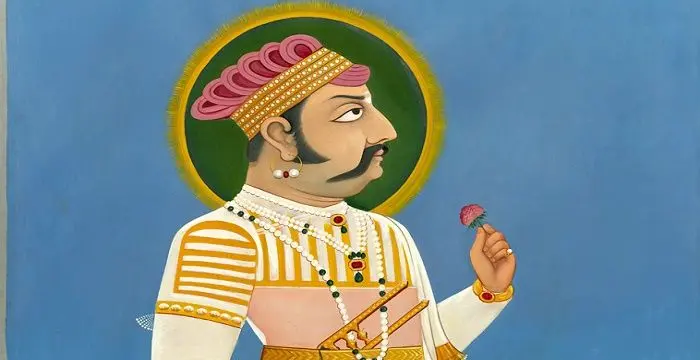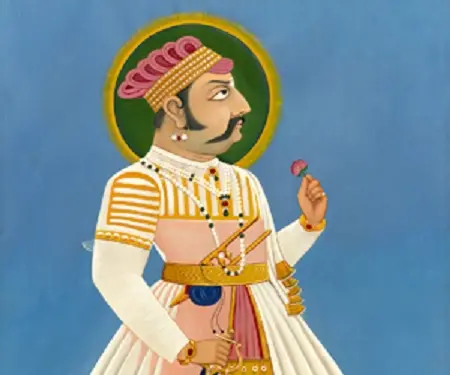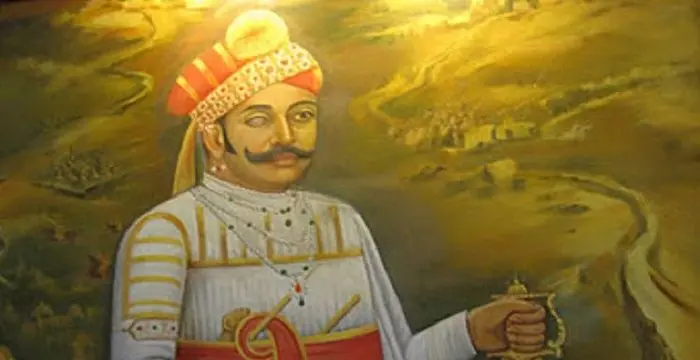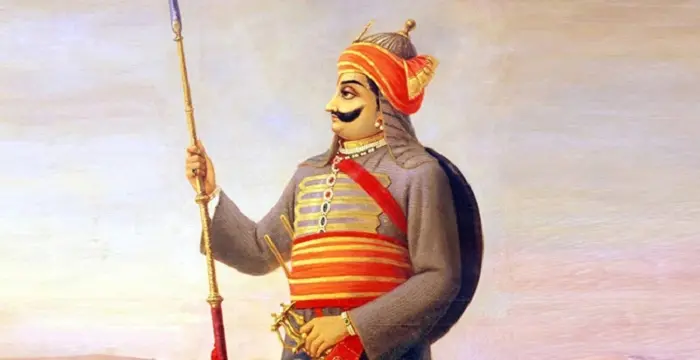
Kumbha of Mewar - Ruler of Mewar, Family and Family
Kumbha of Mewar's Personal Details
Rana Kumbha was the ruler of Mewar in India from 1433 to 1468
| Information | Detail |
|---|---|
| Birthday | 1433 |
| Died on | January 1, 1468 |
| Nationality | Indian |
| Famous | Historical Personalities, Emperors & Kings, Emperors, Kings, Ruler of Mewar |
| Cause of death |
|
| Gender | Male |
| Famous as | Ruler of Mewar |
| Died at Age | 35 |
// Famous Emperors
Sundiata Keita
Sundiata Keita was the founder of the Mali Empire in West Africa. This biography profiles his childhood, early life, struggles, founding of empire, rule, administration, achievements and also gives some fun facts.
Ashoka
Ashoka was the third emperor of the Mauryan Dynasty and ruled almost the entire Indian subcontinent. This biography profiles his childhood, life, reign, achievements and timeline
Murad IV
Murad IV was one of the mighty Sultans in the history of the Ottoman Empire. This biography profiles his childhood, family, accession, rule, administration and timeline.
Kumbha of Mewar's photo
Who is Kumbha of Mewar?
Kumbhakarna Singh, better known as Rana Kumbha, was the ruler of Mewar, in India, from 1433 to 1468. He was the son of Maharana Mokal Singh, hailing from the Sisodia clan of Rajputs. One of the most powerful rulers in the Indian subcontinent in the 15th century, he bravely fought against the Muslim invaders and established Mewar as one of the major states ruled by an Indian ruler, owing sovereignty to no foreign invader. His father Maharana Mokal was assassinated by his paternal uncles, Chacha and Mera, and political chaos pervaded in Mewar regarding the succession. The assassins of the maharana received no support from the nobles and had to flee. Thus Rana Kumbha ascended the throne of Mewar, with assistance from Ranmal (Ranamalla) Rathore of Mandore. A few years hence Rana Kumbha had to face attacks from Mahmud Khilji, Sultan of Malwa, who had successfully captured Machhindargarh, Pangarh and Chaumuha. Fierce battles between the two powerful rulers followed and Rana Kumbha successfully defeated him, even talking Khilji a prisoner for a few months. He went on to vastly expand his territories and ably defended Mewar from his enemies. Rana Kumbha is also well known for his architectural works, the best known of which is the Vijay Stambha of Chittor.
// Famous Kings
Sundiata Keita
Sundiata Keita was the founder of the Mali Empire in West Africa. This biography profiles his childhood, early life, struggles, founding of empire, rule, administration, achievements and also gives some fun facts.
Ashoka
Ashoka was the third emperor of the Mauryan Dynasty and ruled almost the entire Indian subcontinent. This biography profiles his childhood, life, reign, achievements and timeline
Murad IV
Murad IV was one of the mighty Sultans in the history of the Ottoman Empire. This biography profiles his childhood, family, accession, rule, administration and timeline.
Childhood & Early Life
Rana Kumbha was born as Kumbhakarna Singh to Rana Mokal Singh of Mewar and his wife Sobhagya Devi, daughter of Jaitmal Sankhla, the Parmara fief-holder of Runkot in the state of Marwar. Rana Kumbha hailed from the Sisodia clan of Rajputs.
His father was a great warrior, much respected for his courage and valor. He defeated Nagaur, Gujarat and repelled an invasion by the Delhi Sultan. However Mokal Singh’s reign as the Maharana of Mewar was cut short by his assassination in 1433 at the hands of his paternal uncles, Chacha and Mera.
Accession & Reign
The kingdom of Mewar was plunged into political chaos following the untimely death of the maharana. His assassins received no support in grabbing the throne for themselves and were forced to flee the kingdom. Thus Kumbhakarna Singh, just 13 years old at that time, ascended the throne as Rana Kumbha.
Rana Kumbha inherited the valor and courage of his father, and despite his young age and the unfortunate circumstances in which he became the ruler, he went on to become one of the greatest rulers of Mewar. During his early years as the ruler, he received assistance from Ranmal (Ranamalla) Rathore of Mandore.
During the initial years of Rana Kumbha’s reign, Mahmud Khilji, Sultan of Malwa, was gaining considerable power in western India. He launched a series of attacks on Mewar in November 1442 and was successful in capturing Machhindargarh, Pangarh and Chaumuha.
Rana Kumbha launched an attack on Mahmud Khilji’s troops when they were encamping during the rainy season in April 1443. He was able to make the sultan flee to Mandu for a while.
In November 1443, the sultan attacked again and captured Gagraun and adjoining forts. But Rana Kumbha was able to defend Chittor and defeated the sultan in the fierce Battle of Mandalgarh and Banas. He then erected the Vijay Stambha at Chittor to commemorate the victory.
A major political event took place in the 1450s. The ruler of Nagaur, Firuz (Firoz) Khan died around 1453-1454, and a bitter war of succession began between the deceased ruler’s son and brother. The son, Shams Khan, initially sought the help of Rana Kumbha against his uncle Mujahid Khan and was able to take over the throne with the Rana’s help.
However, after becoming the ruler, Shams Khan, sought the help of Qutbuddin, the Sultan of Gujarat, and refused to weaken his defenses. This angered Kumbha and he proceeded to capture Nagaur, Kasili, Khandela and Sakambhari.
In retaliation, Qutbuddin captured Sirohi and attacked Kumbhalmer. He then entered into an agreement with Mahmud Khilji to attack Mewar. While Qutbuddin was able to capture Abu, his advance towards Chittor was blocked.
Despite Kumbha’s bravery and war tactics, Mahmud Khilji captured Ajmer and conquered Mandalgarh. Other rulers like Rao Jodha, the son of Ranmal Rathore, also launched attacks on Kumbha’s territories. Displaying great courage, Rana Kumbha successfully defended his kingdom against this multi-directional attack. Qutbuddin died in 1458, and the events following his death favored Kumbha who recaptured his lost territories.
Major Battles
The battles of Mandalgarh and Banas were fought between Rana Kumbha and Mahmud Khilji. Kumbha defeated Khilji, both at the battle of Mandalgarh and the battle of Banas. Humiliated by these repeated defeats, Khilji did not dare to launch any other attack on Kumbha for several years.
The Battle of Nagaur was another major battle Rana Kumbha fought. It took place between the Rajputs of Mewar and the Nagaur Sultanate, and was won by Kumbha who successfully annexed Nagaur.
Architectural Achievements
Rana Kumbha is much renowned for his architectural works, the most famous of which is the Vijay Stambha (Victory Tower), located in Chittorgarh fort in Chittor. Completed in 1448, the 37.19 meter high 9-storied tower is one of the most remarkable monuments in India.
Personal Life & Legacy
Rana Kumbha had two sons, Udai Singh I and Raimal. His son Udai was an over ambitious and ruthless man.
Rana Kumbha was offering prayers to Eklengji (Lord Siva) in 1468 when he was killed by his son Udai Singh who proclaimed himself the ruler.
// Famous Ruler of Mewar
Rana Sanga
Rana Sanga was the ruler of Mewar and one of the most prominent Rajput leaders in the 16th century India. This biography of Rana Sanga provides detailed information about his childhood, life, achievements, works & timeline.
Maharana Pratap
Maharana Pratap was a Hindu maharaja of the Rajput confederacy of Mewar, in the present day state of Rajasthan. This biography of Maharana Pratap provides detailed information about his childhood, life, achievements, works & timeline.
Kumbha of Mewar biography timelines
- // 1433Rana Kumbha was born as Kumbhakarna Singh to Rana Mokal Singh of Mewar and his wife Sobhagya Devi, daughter of Jaitmal Sankhla, the Parmara fief-holder of Runkot in the state of Marwar. Rana Kumbha hailed from the Sisodia clan of Rajputs.
- // Nov 1442During the initial years of Rana Kumbha’s reign, Mahmud Khilji, Sultan of Malwa, was gaining considerable power in western India. He launched a series of attacks on Mewar in November 1442 and was successful in capturing Machhindargarh, Pangarh and Chaumuha.
- // Apr 1443Rana Kumbha launched an attack on Mahmud Khilji’s troops when they were encamping during the rainy season in April 1443. He was able to make the sultan flee to Mandu for a while.
- // Nov 1443In November 1443, the sultan attacked again and captured Gagraun and adjoining forts. But Rana Kumbha was able to defend Chittor and defeated the sultan in the fierce Battle of Mandalgarh and Banas. He then erected the Vijay Stambha at Chittor to commemorate the victory.
- // 1448Rana Kumbha is much renowned for his architectural works, the most famous of which is the Vijay Stambha (Victory Tower), located in Chittorgarh fort in Chittor. Completed in 1448, the 37.19 meter high 9-storied tower is one of the most remarkable monuments in India.
- // 1453 To 1454A major political event took place in the 1450s. The ruler of Nagaur, Firuz (Firoz) Khan died around 1453-1454, and a bitter war of succession began between the deceased ruler’s son and brother. The son, Shams Khan, initially sought the help of Rana Kumbha against his uncle Mujahid Khan and was able to take over the throne with the Rana’s help.
- // 1458Despite Kumbha’s bravery and war tactics, Mahmud Khilji captured Ajmer and conquered Mandalgarh. Other rulers like Rao Jodha, the son of Ranmal Rathore, also launched attacks on Kumbha’s territories. Displaying great courage, Rana Kumbha successfully defended his kingdom against this multi-directional attack. Qutbuddin died in 1458, and the events following his death favored Kumbha who recaptured his lost territories.
- // 1468Rana Kumbha was offering prayers to Eklengji (Lord Siva) in 1468 when he was killed by his son Udai Singh who proclaimed himself the ruler.
// Famous Emperors & Kings
Sundiata Keita
Sundiata Keita was the founder of the Mali Empire in West Africa. This biography profiles his childhood, early life, struggles, founding of empire, rule, administration, achievements and also gives some fun facts.
Ashoka
Ashoka was the third emperor of the Mauryan Dynasty and ruled almost the entire Indian subcontinent. This biography profiles his childhood, life, reign, achievements and timeline
Murad IV
Murad IV was one of the mighty Sultans in the history of the Ottoman Empire. This biography profiles his childhood, family, accession, rule, administration and timeline.
Xerxes I
Xerxes I (Xerxes the Great) was the fourth and the most famous king of the Archaemenid dynasty of Persia. This biography profiles his childhood, family, personal life, life history, achievements, campaigns, administration, death and other facts.
Sargon of Akkad
Sargon of Akkad, also called ‘Sargon the Great’, ‘Sarru-Kan’ and ‘Shar-Gani-Sharri’, was the founder and first king of the Akkadian Empire. This biography profiles his childhood, life, rule, administration, timeline, and gives some fun facts.
Abdullah of Saudi Arabia
Abdullah bin Abdulaziz Al Saud was the King of Saudi Arabia from 2005 to 2015 and the third wealthiest head of state in the world. Find more facts about his life, childhood and timeline.
Kumbha of Mewar's FAQ
When was Kumbha of Mewar died?
Kumbha of Mewar was died at 1468-01-01
Which age was Kumbha of Mewar died?
Kumbha of Mewar was died at age 35
What is Kumbha of Mewar nationalities?
Kumbha of Mewar's nationalities is Indian
What is Kumbha of Mewar's cause of dead?
Kumbha of Mewar dead because of Assassination
How famous is Kumbha of Mewar?
Kumbha of Mewar is famouse as Ruler of Mewar








